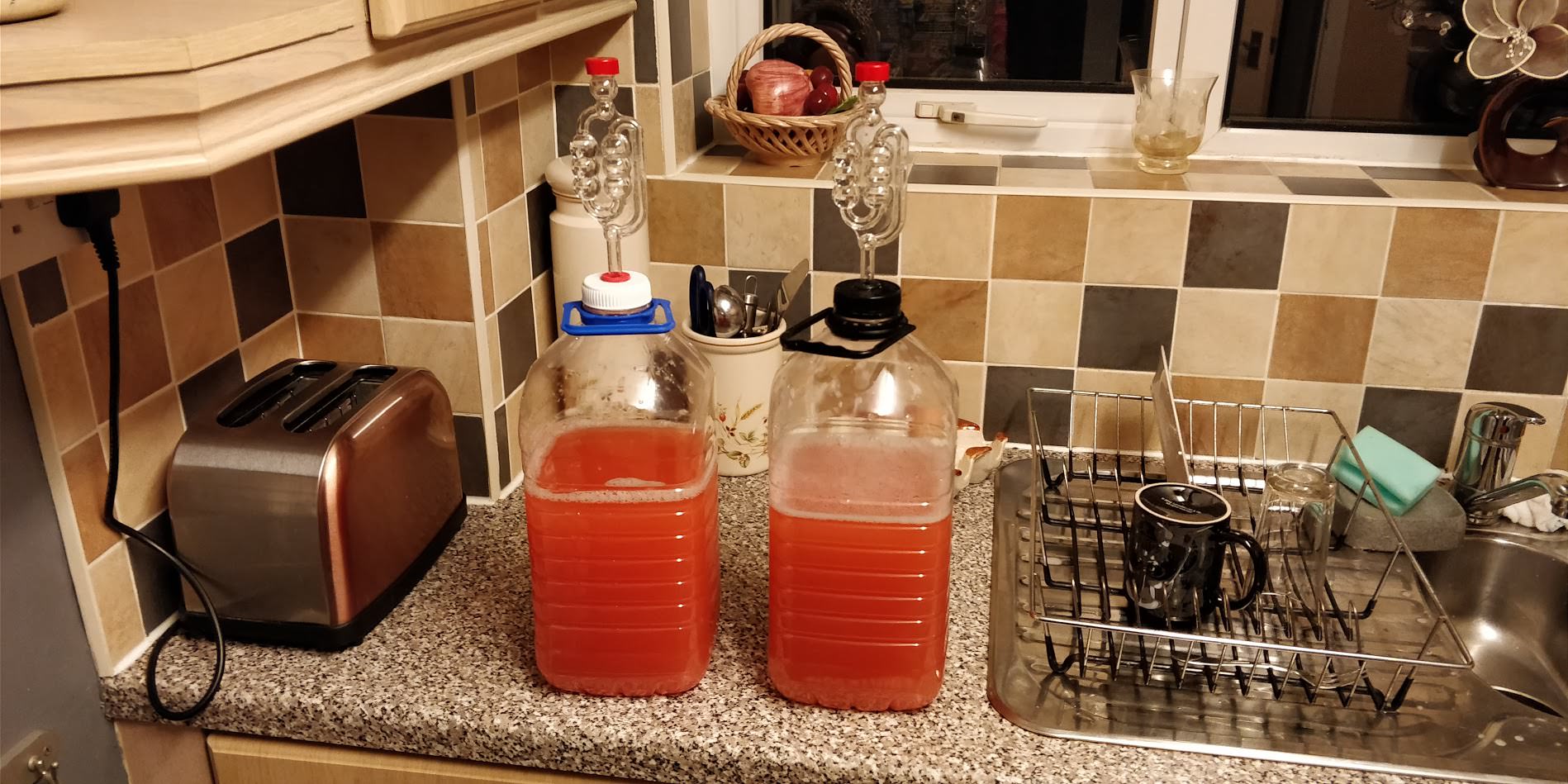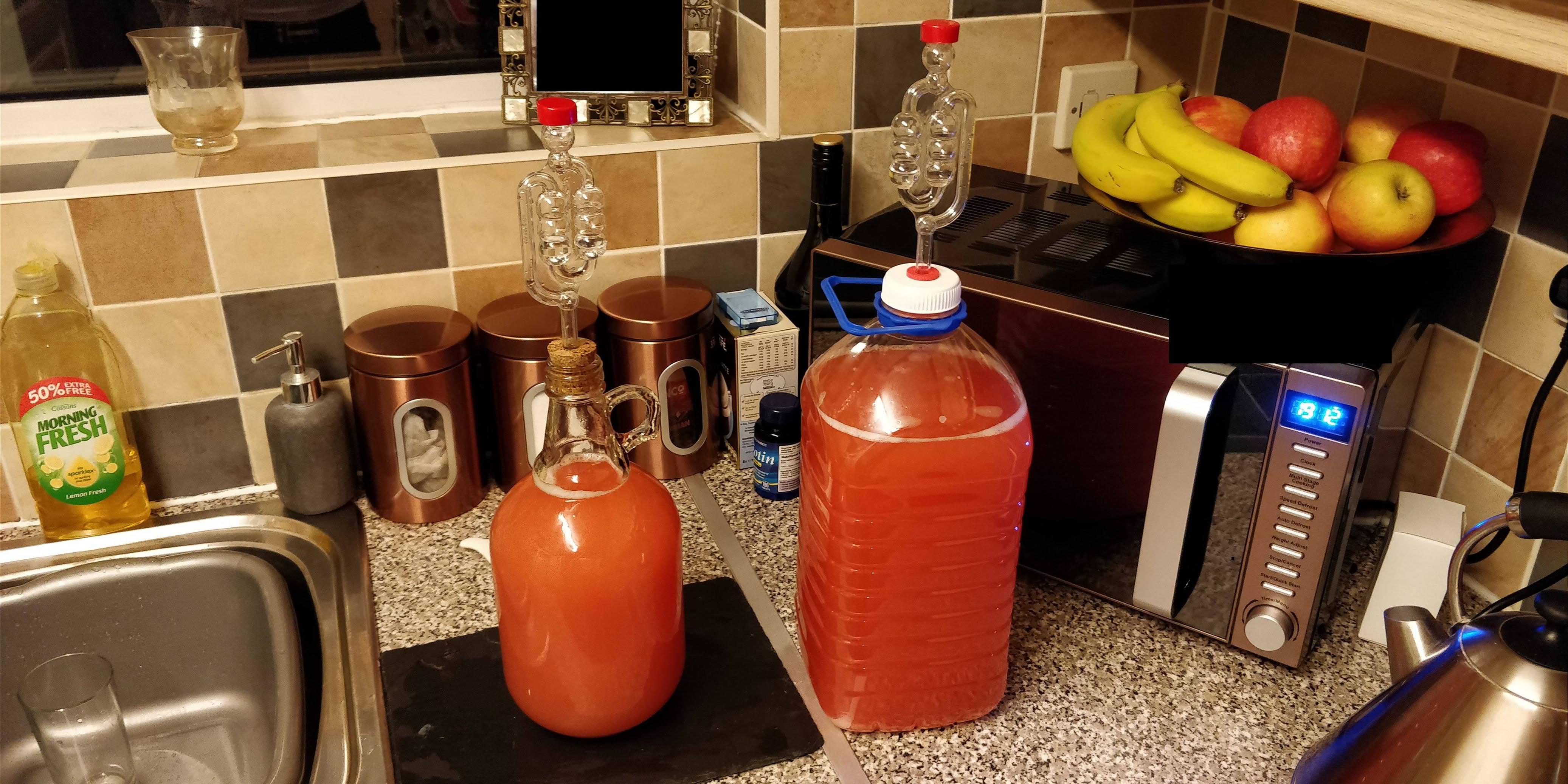ringmany
Member
- Joined
- Mar 20, 2018
- Messages
- 42
- Reaction score
- 2
Hi everyone,
I've been making some Plum wine. I've reached the secondary fermentation stage, so I've moved my wines into two, 1 gallon demijohns. There's less liquid than I thought there would be, so I wasn't able to fill the demijohn all the way.
Here's a photo showing them both:

So both are around 3/5 full. I've been reading up online about whether the demijohn not being full is going to cause issues, such as oxidisation etc.
It's a plum wine with Nottingham Danstar yeast, currently brewing at 18 degrees. If I move all of the liquid into one demijohn, then the remaining one only has 1/4 full, so I felt it was best to try and make them as equally filled as possible. I can hear one of them still bubbling ever so slightly.
I don't want to simply fill 1 one of them, because then I'll waste quite a bit, and I can't fill it with much else because it will dilute it.
Do you believe this is going to cause issues for me? It needs to remain like this for at least 2 weeks, then 3 weeks in another demijohn once racked. Any suggestions how to improve this setup, as I'm getting mixed signals as to whether this is going to cause oxidation.
Thanks.
I've been making some Plum wine. I've reached the secondary fermentation stage, so I've moved my wines into two, 1 gallon demijohns. There's less liquid than I thought there would be, so I wasn't able to fill the demijohn all the way.
Here's a photo showing them both:

So both are around 3/5 full. I've been reading up online about whether the demijohn not being full is going to cause issues, such as oxidisation etc.
It's a plum wine with Nottingham Danstar yeast, currently brewing at 18 degrees. If I move all of the liquid into one demijohn, then the remaining one only has 1/4 full, so I felt it was best to try and make them as equally filled as possible. I can hear one of them still bubbling ever so slightly.
I don't want to simply fill 1 one of them, because then I'll waste quite a bit, and I can't fill it with much else because it will dilute it.
Do you believe this is going to cause issues for me? It needs to remain like this for at least 2 weeks, then 3 weeks in another demijohn once racked. Any suggestions how to improve this setup, as I'm getting mixed signals as to whether this is going to cause oxidation.
Thanks.





















![[Upgraded] 9Pcs Tree Root Growing Box with Drain Holes, Half Transparent Plant Rooting Propagation Ball & Metal Core Twist Ties, for Fast Propagation Plants (Size M)](https://m.media-amazon.com/images/I/514MWQxtWOL._SL500_.jpg)























